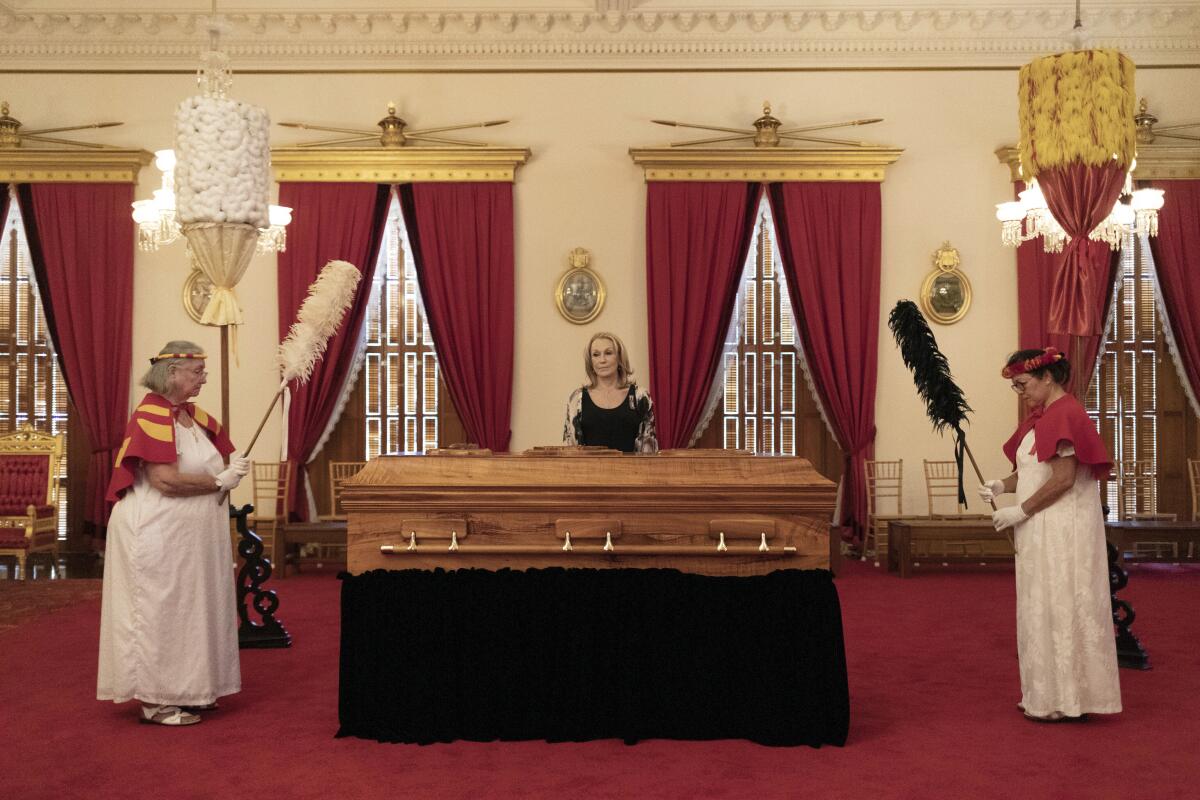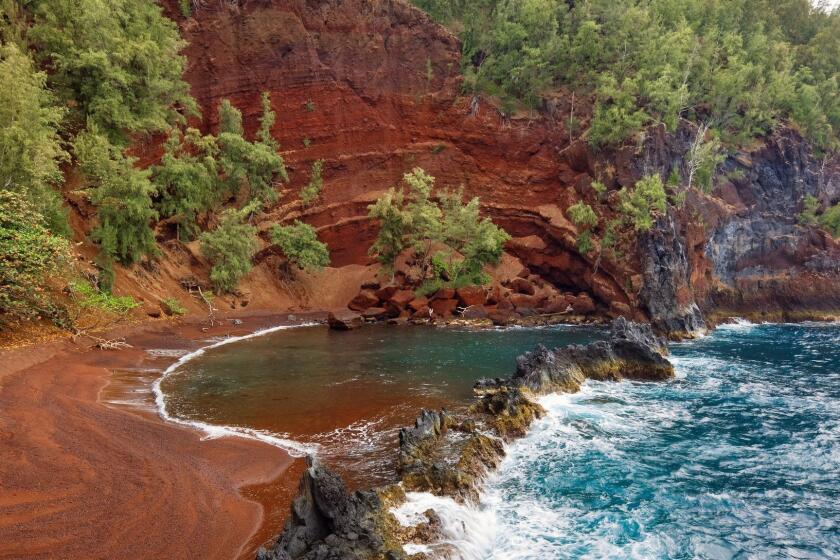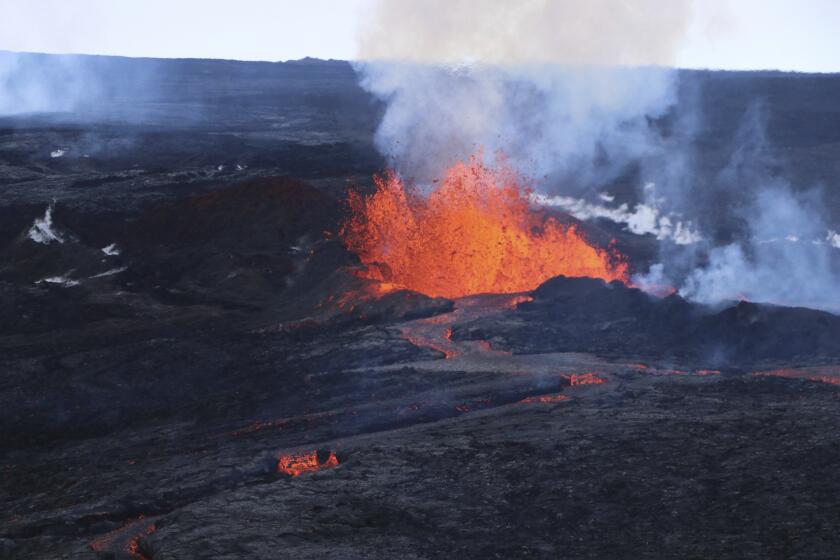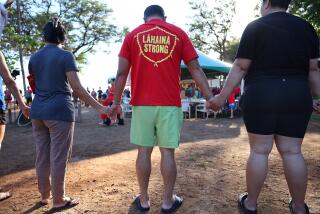Last Hawaiian princess to be buried Monday after public viewing of casket

HONOLULU — The casket bearing the 96-year-old heiress long considered the last Hawaiian princess went on public display Sunday in the downtown Honolulu palace that benefited from her wealth.
Abigail Kinoiki Kekaulike Kawananakoa, who died Dec. 11, is to be buried Monday. Her casket, hand-crafted from a 165-year-old koa tree that fell during a 2021 storm on the Big Island, arrived at Iolani Palace in a hearse Sunday and was greeted by traditional Hawaiian wailing and a chanting of her lineage before being carried by members of a law enforcement honor guard up the palace’s front stairs and into the throne room.
Family spokesperson Caroline Witherspoon called the procession “extremely emotional,” saying: “The wailing — it was just beautiful. It just caused a visceral reaction for me. I started to cry.”
The palace is America’s only royal residence, where the Hawaiian royal family lived. It now serves mostly as a museum. Kawananakoa was the palace’s largest single benefactor, according to her publicists, and even paid its electricity bills for many years.
Members of the public were allowed to line up to view her casket and weren’t required to wear the shoe coverings that palace visitors normally have to wear as a conservation measure. A carpet for mourners to walk on was temporarily installed for the viewing.
Kawananakoa died at her home in Nuuanu, near downtown Honolulu. She passed away peacefully with her wife, Veronica Gail Kawananakoa, 70, at her side, according to a news release.
Red Bull athletes skiing down a mountain doesn’t sound like a big deal.
“Abigail will be remembered for her love of Hawaii and its people,” her wife said in the release, “and I will miss her with all of my heart.”
Kawananakoa held no formal title but was considered a princess because her lineage included the royal family who once ruled the Hawaiian islands. She was a reminder of Hawaii’s monarchy and a symbol of its national identity that endured after the kingdom was overthrown by American businessmen in 1893.
In 1895, an unsuccessful attempt by Hawaiian royalists to restore Queen Liliuokalani to power resulted in her arrest. She was put on trial before a military tribunal in her own throne room. After she was convicted, she was imprisoned in an upstairs bedroom of the palace for nearly eight months.
Kawananakoa inherited her wealth from her great-grandfather, Irish businessman James Campbell, who made his fortune as a sugar plantation owner and one of Hawaii’s largest landowners.
KAILUA, Hawaii — It was like a watercolor dream, blurry at the edges, filled with jungle greens and cerulean sky.
He had married Abigail Kuaihelani Maipinepine Bright. Their daughter, Abigail Wahiikaahuula Campbell, married Prince David Kawananakoa, who was named an heir to the throne. Their daughter went on to give birth to Abigail.
After the prince died, his widow adopted their grandchild, Abigail, which strengthened her claim to the title of princess.
She received more Campbell money than anyone else and amassed a trust valued at about $215 million.
In 2017, a court battle began over control of her trust after she suffered a stroke. In 2018, Kawananakoa attempted to amend her trust to ensure that her wife would receive $40 million and all her personal property, according to court records.
News Alerts
Get breaking news, investigations, analysis and more signature journalism from the Los Angeles Times in your inbox.
You may occasionally receive promotional content from the Los Angeles Times.
Three years later, a judge ruled that Kawananakoa was unable to manage her property and business affairs because she was impaired.
Kawananakoa gained notoriety when she sat on an Iolani Palace throne for a Life magazine photo shoot in 1998. She damaged some of its fragile threads.
The uproar led to her ouster as president of Friends of Iolani Palace, a position she had held for more than 25 years.
In addition to the palace’s upkeep, Kawananakoa funded various causes over the years, including scholarships for Native Hawaiian students, opposition to Honolulu’s rail transit project and protests against a giant telescope. She also donated items owned by King Kalakaua and Queen Kapiolani for public display, including a 14-carat diamond from the king’s pinky ring.
People on Hawaii’s Big Island wonder if anything can be done to stop or divert the flow of lava as molten rock from Mauna Loa inches toward a highway.
On Friday, Hawaii Gov. Josh Green ordered that U.S. and Hawaii state flags be flown at half-staff at the state Capitol and state offices through sunset Monday for her funeral services.
A private funeral service is scheduled for Monday at Mauna Ala, also known as Royal Mausoleum State Monument, which is the burial place of Hawaiian royalty.
More to Read
Sign up for Essential California
The most important California stories and recommendations in your inbox every morning.
You may occasionally receive promotional content from the Los Angeles Times.












